
Revolutionizing Sustainable Agriculture: The 2025 Arch Greenhouse Trends & Innovations for Climate Resilience
In recent years, the agricultural sector has faced unprecedented challenges driven by climate change, resource depletion, and food security concerns. The Arch Greenhouse, a cutting-edge innovation in sustainable agriculture, is poised to play a pivotal role in the industry's evolution. According to a report from the Food and Agriculture Organization (FAO), global food production must increase by 70% by 2050 to meet the demands of a projected population of 9.7 billion. This calls for innovative solutions that integrate sustainable practices with advanced technologies.
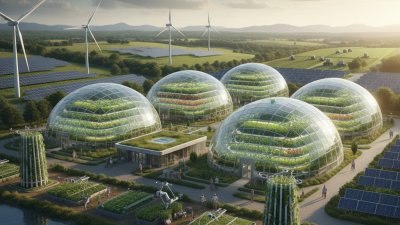
The Arch Greenhouse design harnesses optimal environmental control, providing an ideal setting for year-round crop cultivation while significantly reducing resource inputs. The sustainable architecture not only enhances energy efficiency but also maximizes water conservation—a critical factor given that agriculture accounts for around 70% of global freshwater use, as per the World Resources Institute. With advancements in automation, data analytics, and climate-smart practices, the Arch Greenhouse represents a transformative solution that could enhance resilience against climate variability, reduce carbon footprints, and ultimately contribute to sustainable development goals.
As we look toward 2025, it is essential for stakeholders in the agricultural industry to adopt such innovative systems that prioritize sustainable practices while addressing pressing global challenges. The Arch Greenhouse stands out as a beacon of hope, demonstrating that the integration of technology and sustainability can lead to a more resilient agricultural future.
Emerging Technologies in Sustainable Agriculture for 2025
As we approach 2025, sustainable agriculture is witnessing a paradigm shift driven by emerging technologies that promise to enhance climate resilience. Innovations in precision farming are at the forefront, employing data analytics, IoT devices, and AI-powered algorithms to optimize resource use. This allows farmers to monitor soil health, crop conditions, and weather patterns in real-time, ensuring that they can make informed decisions that reduce waste and improve yields while minimizing environmental impact.
Another significant trend is the integration of vertical farming and aquaponics systems, which utilize advanced hydroponic techniques and symbiotic relationships between plants and fish to create self-sustaining ecosystems. These methods not only maximize space and reduce water consumption but also enable urban farming, bringing fresh produce closer to consumers and lessening dependency on long supply chains. As we harness these cutting-edge technologies, the agricultural sector is poised to become more resilient against the challenges posed by climate change, enabling sustainable food production for generations to come.
Innovative Greenhouse Designs Enhancing Climate Adaptability
The landscape of sustainable agriculture is undergoing a transformative shift, particularly through innovative greenhouse designs that enhance climate adaptability. According to the International Society for Horticultural Science, greenhouse production can boost crop yields by up to 30% compared to open-field farming. By integrating advanced technologies and bioclimatic principles, modern greenhouses are becoming more resilient to climate variability, making them vital for food security in an unpredictable climate.
One trend gaining traction is the use of smart greenhouse systems. These systems utilize IoT devices and AI-driven analytics to optimize environmental conditions, leading to significant resource savings. A report by MarketsandMarkets estimates that the smart greenhouse market will grow from $1.2 billion in 2020 to $2.4 billion by 2025, reflecting a compound annual growth rate of 14.7%. Features like automated climate control and precision irrigation not only improve crop health but also reduce water usage by up to 50%, aligning with sustainable agricultural practices.
Additionally, vertical farming integrated within greenhouse environments is another innovative approach addressing land scarcity and resource efficiency. The Food and Agriculture Organization indicates that vertical farms can produce 10 times more food per square foot compared to traditional farming methods. As these innovative designs gain popularity, they hold the potential to reshape agricultural landscapes, ensuring that farmers can adapt to the challenges posed by climate change while maximizing yields and resources.
Integrating Smart Agriculture Practices for Resource Optimization
The agricultural market is on the brink of transformation, with the global market anticipated to be valued at $100.31 billion by 2024, growing to an impressive $919.22 billion by 2033. This growth is driven by the integration of smart agricultural practices that optimize resource use. Innovative technologies, such as cloud computing combined with the Internet of Things (IoT) and big data analytics, are enabling precision farming techniques. These advancements allow for precise planting, pest management, and efficient resource allocation, vital for enhancing agricultural resilience against climate change.
Moreover, the shift toward sustainable agriculture is being further fueled by artificial intelligence (AI), which serves as a catalyst for developing new productivity levels. AI applications in farming can significantly reduce waste and promote efficient water usage, essential factors in sustaining agricultural ecosystems. As we look toward 2025 and beyond, the industry is likely to see an increased emphasis on these smart technologies, facilitating better yields while minimizing environmental impact. The focus on integrating technological resources will be crucial for achieving climate resilience in agriculture, ensuring food security for future generations.
Impact of Vertical Farming on Urban Sustainability Initiatives
Vertical farming is rapidly gaining traction as an innovative solution for urban sustainability initiatives. By utilizing limited space in densely populated cities, vertical farms can produce food year-round, minimizing the dependency on remote agricultural lands and reducing transportation emissions. These farms employ advanced technologies such as hydroponics and aeroponics, which use significantly less water than traditional farming methods. Moreover, they can be integrated into urban infrastructures, such as rooftops and repurposed buildings, transforming unused spaces into productive green areas.
The impact of vertical farming extends beyond just food production; it contributes significantly to urban resilience against climate change. By optimizing land use and reducing the carbon footprint associated with food distribution, cities can enhance their food security while promoting local economies. This approach also fosters community engagement, as residents participate in urban agriculture initiatives, thus strengthening social ties. As cities continue to grow, the adoption of vertical farming can serve as a pivotal element in creating sustainable, self-sufficient urban environments while addressing critical challenges posed by climate change.
Revolutionizing Sustainable Agriculture: The 2025 Arch Greenhouse Trends & Innovations for Climate Resilience - Impact of Vertical Farming on Urban Sustainability Initiatives
| Trend/Innovation | Description | Impact on Sustainability | Estimated Yield Increase (%) | Water Use Reduction (%) |
|---|---|---|---|---|
| Hydroponics | Soil-less growing system using mineral nutrient solutions | Maximizes space usage and minimizes pesticide reliance | 30% | 90% |
| Vertical Farming | Layered farming techniques often integrated within urban environments | Reduces transportation footprint and utilizes renewable energy | 50% | 80% |
| Smart Greenhouses | Use of IoT technologies for climate and growth monitoring | Enhances efficiency and reduces waste through data analysis | 20% | 70% |
| Aquaponics | Combining aquaculture with hydroponics for sustainable farming | Creates a closed-loop system reducing waste | 25% | 90% |
| Renewable Energy Sources | Implementation of solar panels and wind turbines | Decreases reliance on fossil fuels for energy | N/A | N/A |
Advancements in Renewable Energy Utilization within Greenhouses
The utilization of renewable energy within greenhouses is transforming sustainable agriculture, particularly as we approach the trends predicted for 2025. A significant advancement comes from integrating solar energy systems into greenhouse designs. According to a report by the International Energy Agency, solar energy could meet up to 25% of global agricultural energy needs by 2025. This shift not only reduces the carbon footprint of greenhouse operations but also enhances energy independence for farmers.
Additionally, innovations in geothermal heating are becoming more prevalent, providing a reliable, efficient method to maintain optimal growing conditions. The U.S. Department of Agriculture estimates that employing geothermal systems could decrease heating costs by as much as 50%. As climate resilience becomes increasingly vital, these renewable energy technologies will ensure that greenhouses can sustainably adapt to changing environmental conditions, securing food production in the face of climate change challenges.
Advancements in Renewable Energy Utilization within Greenhouses (2025)
Related Posts
-
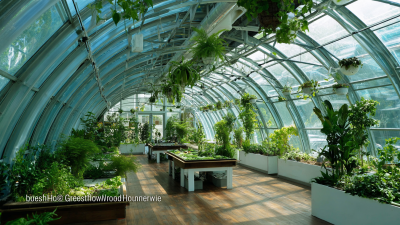
13 Essential Features of the Best Arch Greenhouse You Must Know
-
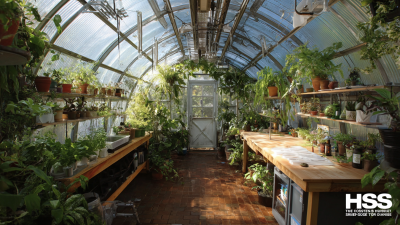
Unlocking the Secrets of the Best Arch Greenhouse: Technical Specs and Essential Setup Guide
-
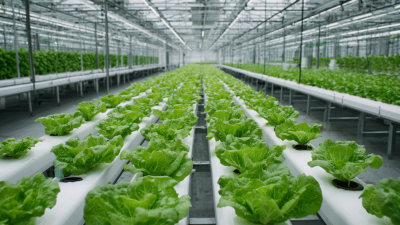
Innovative Examples of Hydroponics Systems Transforming Global Agriculture
-
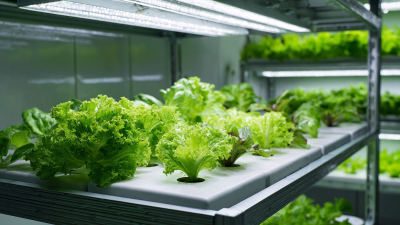
How to Minimize Repair Costs with Excellent After Sales Service for the Best Aquaponics System
-
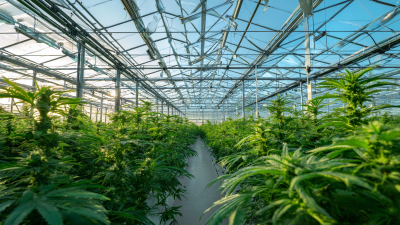
How to Optimize Your Smart Greenhouse for Maximum Yield
-
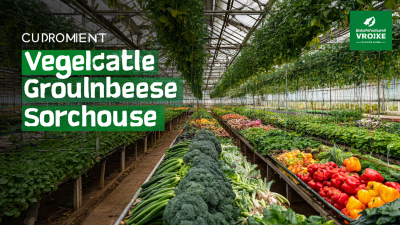
Ultimate Checklist for Sourcing the Best Vegetable Greenhouses: Key Specifications and Market Insights
